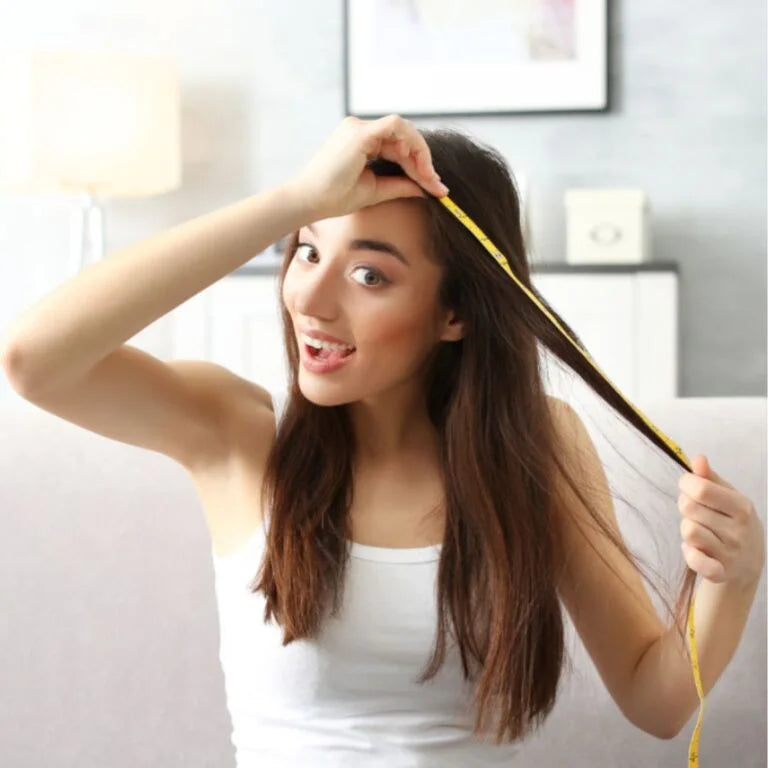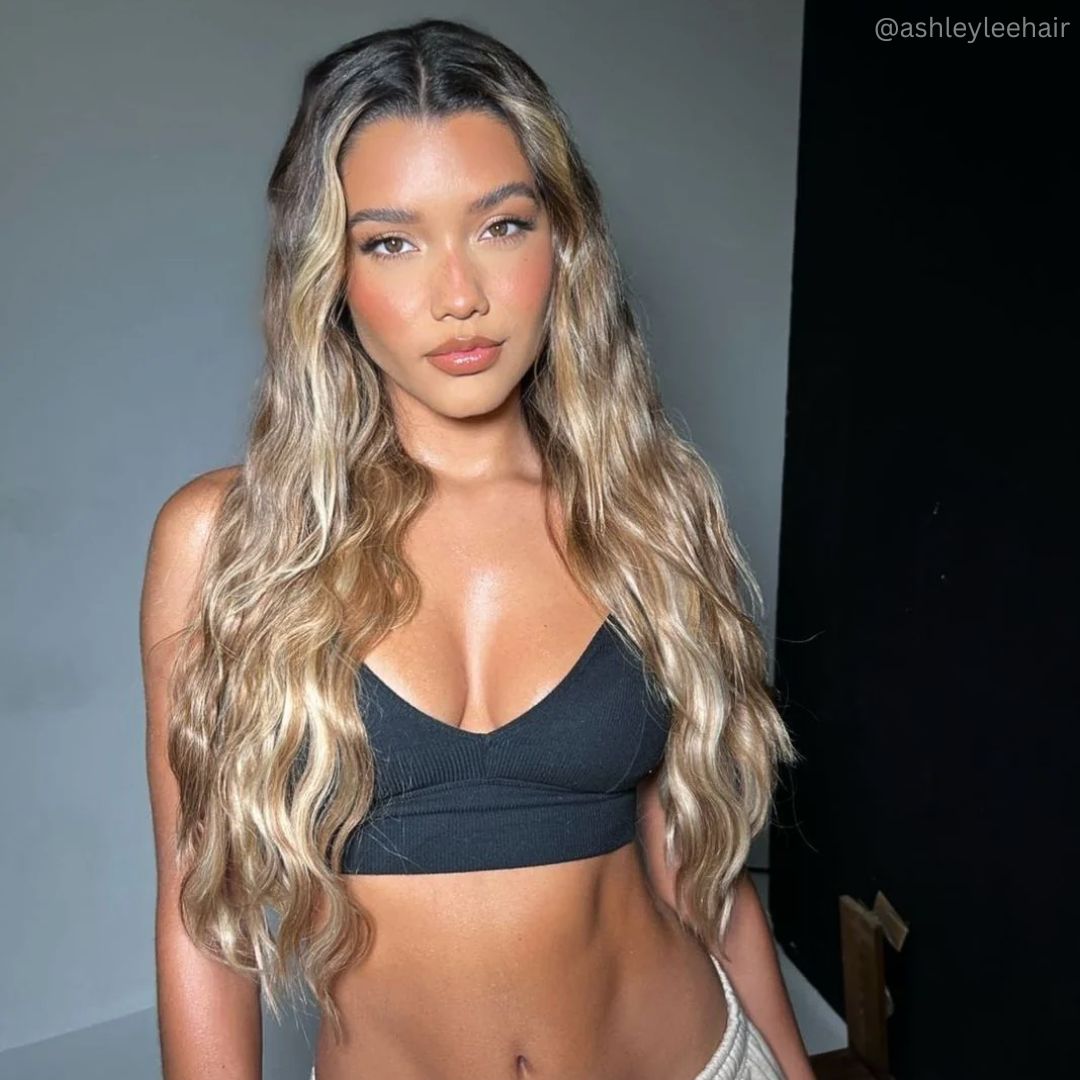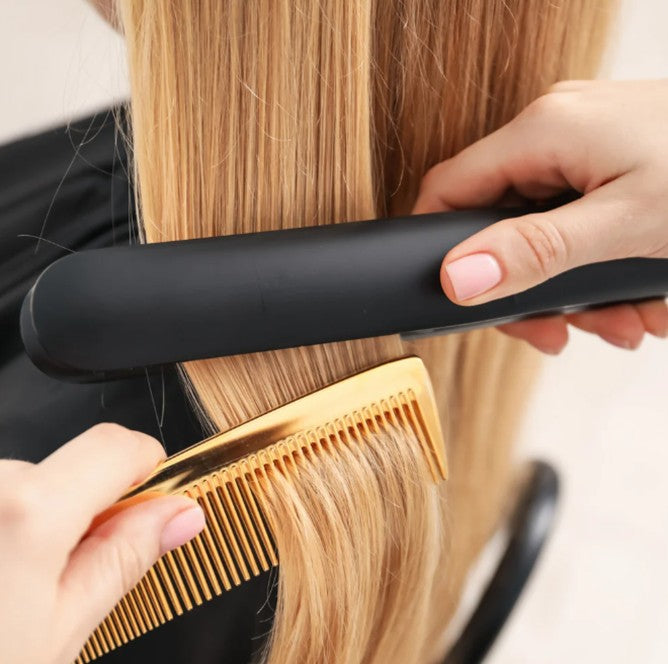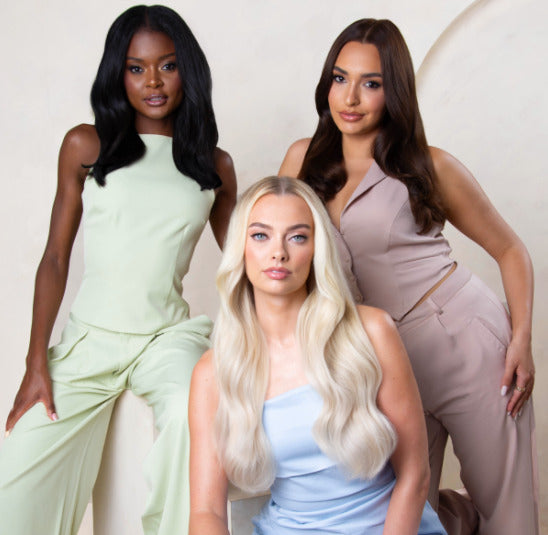Quick Fixes For Hair Extensions in Unexpected Downpours
by HEATHER COLLIER / JUN 16, 2024
Reading Time: 5 Minutes
Index
Summer doesn’t always equal sunshine, especially if you’re living in the UK. As we find ourselves gradually moving through June, we’re still prone to the odd shower, pockets of humidity, and even a full-blown downpour. We can’t always prepare for the weather, but we can definitely prepare for bad hair days.
Most human hair extensions will naturally dry with a slight kink or wave, but that might not be your desired style, plus, it’s uncomfortable walking around with wet hair all day! Here’s some quick and easy ways to fix your extensions during unexpected downpours and how to protect hair from rain and humidity – but first, let’s learn the basics:
What Happens If Your Hair Extensions Get Wet?
Once your hair extensions are wet, whether they’ve been washed, dipped in a swimming pool, the ocean, or rained on, the fibres within the hair will begin to weaken and can appear and feel greasy when they eventually dry, especially if they are repeatedly being exposed to heavy amounts of water or moisture. Depending on the type of extension, this could affect the attachment, and ultimately cause difficulty when applying or reattaching to your natural hair.
If you’re finding it difficult to know how to maintain wet hair extensions, our blog How Does Water Affect Your Hair Extensions? will guide you through everything you need to know on how to keep them in tip top shape.
How Long Do Hair Extensions Take To Dry?
Is it okay to let hair extensions dry naturally? Yes, it absolutely is. Hair extensions, much like natural hair, can take a few hours to air dry completely, however, it often depends on the length, density and overall thickness of the hair, making some extensions longer to dry than others.
However, tape ins and weft extensions should be blow dried with a hairdryer immediately after washing instead of being air dried, as bacteria can form around the attachments and fabric if left lingering for too long, creating a phenomenon known as ‘weft rot’. To keep your extensions as healthy as possible, you must absolutely not sleep with wet or damp hair, as it can cause unnecessary matting and tangling of your extensions. If you plan on washing and airdrying your clip in hair extensions overnight, make sure you place them on an extension hanger, holder, or store them somewhere cool and dry, preferably on a smooth, clean surface above the floor so they can dry faster and in a hygienic way. For the best results, air dry them over night so they’re ready to be neatened and styled first thing in the morning.
For the latest tips and hair hacks on drying your extensions properly, cast your eyes on our blog Best Ways To Dry Hair Extensions, for both blow drying and air drying.
Do You Need To Wash Your Hair After Being Rained On?

The answer is also yes! We would advise to wash your hair extensions as soon as possible after being rained on, as rainwater may create an unwanted odour or frizziness for your locks. Once home, make sure you thoroughly wash, condition and dry your hair to rid yourself of any bacteria or build-up. If you want to lock in extra silkiness and shine and extend the lifespan of your extensions, our Quench The Thirst range is ideal for achieving just this, complete with our Deep Moisture Shampoo, Conditioner and Deep Conditioning Hair Mask. Extension-friendly and suitable for all hair types, you’ll be well on your way to having fabulous hair days, rain or shine!
Once washed and rinsed, you’ll need to get brushing! Our The Wet One: Detangling Hairbrush is safe for detangling both wet and dry hair extensions. Our wet hair brush has soft, flexible bristles that effortlessly glide through both natural hair and extensions, causing zero damage or strain on your scalp or attachments. When brushing knotty or tangled hair, be sure to always start from the ends and work your way upwards, holding your hair securely above the knots.

5 Quick Fixes For Hair Extensions In Unexpected Downpours
Updos
One of the best ways to protect your hair from unforeseen weather is by pinning or tying it in an updo. Updo hairstyles allow for a lot of versatility and look chic with almost any outfit, whether it’s a sleek, twisted top knot, a high ponytail or a simple plait, your hair will be contained, making its overall look and texture easier to control once taken out later on.
Umbrella
An umbrella has always got you covered – no, literally. The easiest and perhaps the most obvious way to protect your hair extensions from the rain is by packing one before you head out the door. Opt for a mini one that you can take with you in your handbag, particularly during the winter or April showers.
Hoods and Headscarves
Hoodies or hooded jackets are your best friend when it comes to salvaging your extensions. Whether your hair just isn’t looking it’s best, or you want to prevent a great hair day from turning into a bad one, wearing a hood will keep your tresses dry, protect them from matting in the wind, and ultimately keep them soft beneath the fabric. If you’re at a more formal event or gathering and can’t get away with wearing a hood, consider bringing a shawl or headscarf, should you need to cover your hair from a last minute drizzle or storm.
Hats
Whether it’s a sunhat, trucker hat, cowboy hat or trusty baseball cap, a hat is a foolproof way of protecting your hair, especially if you don’t have an umbrella or hood to hand. Hats can be styled in a number of ways, and trucker hats in particular are all the rage right now. For an extra layer of protection from the rain, you can also compliment your hat by styling your hair extensions into cute pigtails or bunches to keep stray tresses from getting caught in the wind, especially during outdoor events like festivals and concerts.
Braided Hairstyles
Not only will they create bouncy, beach waves once taken out, but braids will also keep your hair bonded tightly together during rain or bad weather, more so than if your tresses are left loose. French braids, Dutch braids, bubble braids and any form of braid hairstyle will ensure your hair extensions remain neat and tidy throughout the day by combatting frizz and fly-aways, regardless of whether they are rained on or not. If you’re travelling to a hot country, braids are also a great way of caring for your hair and extensions, protecting them from exposure to excessive heat and humidity.
Conclusion:
Now that you’re up to speed with how to prep for an English summer and care for wet hair extensions, it’s time to take action! From cute, braided hairstyles to stylish headscarves, hats and hoods, every cloud has a silver lining. No more excuses – say goodbye to frizzy, damp hair for good!
Looking for flawless, salon-worthy hair without breaking the bank? At Cliphair, we’ve got you covered with luxurious clip in hair extensions for quick transformations and permanent hair extensions for long-lasting glam. Extensions require special care and maintenance to preserve their quality, which is why we have all the top-notch hydrating haircare products needed to keep your style on point.
Need the perfect shade? Browse our full range of human hair extensions in over 70 rich, silky shades or check out our FREE Express Color Match Service to ensure a seamless blend every time.






